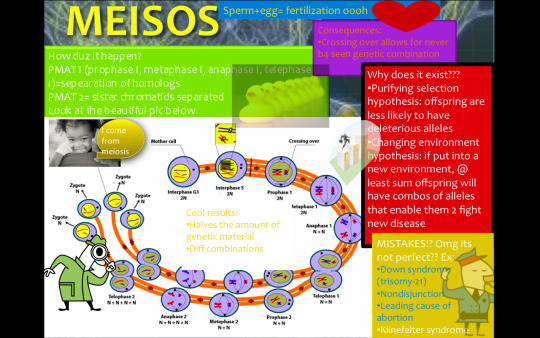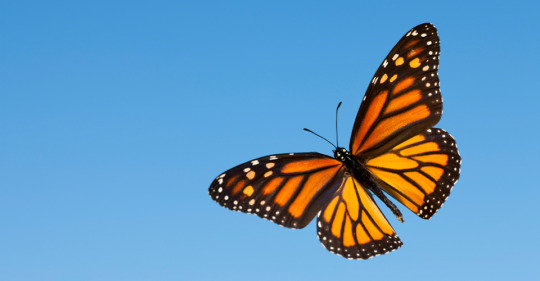Photo

Classic
Edit: I don’t have the source for this, I found it on tumblr some many months ago, hence it is not my image but it is still amazing for studying immunology
2K notes
·
View notes
Text
Regulation of Gene Expression and Wallets

Before diving into this topic, make sure you understand:

Transcription=process of turning DNA into mRNA
Transcription requires Initiation step, which is when the RNA polymerase binds to a promoter which allows the DNA strand to unfold and begin to be trasncribed
Basically, the RNA polymerase is like your wallet: it gives you an okay on whether or not you can purchase something or not. If the moneys there, you're probably going to spend it. If it's not, there's no possible way you can.
Operons are a set of genes that control expression of genes (discovered by Jacob and Monod).
Lac/Inducible operon: switched off until turned on; can be distracted by allolactose, which prevents RNA polymerase from binding to a promoter (instead the allolactose is)
Tryptophan/repressible operon: always on until repressed; when binded with prevents RNA polymerase from binding to a promoter
Basically, lac operon is an empty wallet that can have fake money in it. Tryptophan operon is a full wallet of a prudent person
Allosteric proteins play a part in both operons by acting as regulatory genes

Noncoding RNAs also control gene expression
microRNA (miRNA) blocks translation and degrades mRNA
RNA interference (RNAi) turns off genes with matching sequences
RNA=those pesky little things you have to pay for that add up
Onco-genes lead to cancer
Proto onco-genes are proteins that stimulate cell growth and division; too much leads to too much
tumor-suppressor genes lead to uncontrolled cell growth; too much leads to too much
Think of when you eat too much food, you just keep on going and going...

5 notes
·
View notes
Photo

Here's a (funny) thing to help you study meiosis
0 notes
Text
Fruit Flies and White Eyes!?
Insect Life Cycles & Gender determination
Thomas Hunt Morgan:
chromosome theory of heredity
proved this by using fruit flies (only 4 pairs of chromosomes)
Fruit Flies aka Drsophila:
complete metamorphosis (shown in picture on right)
-Remember the difference between complete and incomplete metamorphosis is that incomplete only has three stages. It has a nymph instead of larva and pupa.
wild type have dark eyes
white-eye is recessive and located exclusively on the X-chromosome so if any flies have it, it's most likely to be a male fruit fly since (can be female!)
How do I tell the difference between a male and female?
Males: -sex organs (looks like a V shape on the back)
-sex combs on front two legs
-solid black abdomen (look for solid body color)
-smaller than females
Females: -striped!
-larger than males
Other things you might want to note about a fruit fly:
-eye color (white or red)
-vestigal wings
-flat eyes
Any questions?
Reply to this post or send me a message! :)
#insect life cycle#gender determination#Thomas Hunt Morgan#Morgan#Chromosome#Chromosome Theory of Heredity#Fruit flies#drosophila#complete metamorphosis#metamorphosis#incomplete metamorphosis#nymph#white-eye#male#female
1 note
·
View note
Photo

Monarch Butterflies Migration Path Tracked by Generations for First Time
Everyone knows all about the epic breeding journey taken each year by generations of monarch butterflies between Mexico and Canada, right? Not so fast, say researchers including University of Guelph biologists.
Until now, linking adult butterflies and their birthplaces during a complicated annual migration spanning all of eastern North America and involving up to five generations of the iconic insects had eluded scientists.
Now for the first time, researchers have mapped that migration pattern across the continent over an entire breeding season. That information might help conserve a creature increasingly threatened by loss of habitat and food sources, says Tyler Flockhart, a PhD student in U of G’s Department of Integrative Biology.
Flockhart is lead author of a paper published in the Proceedings of the Royal Society B with Prof. Ryan Norris and co-authors based in Saskatchewan, Colorado and Australia.
Their new study traced successive generations of adult monarchs to their birthplaces between the southern United States and Ontario over a single breeding season.
Source
4 notes
·
View notes
Photo


Seeing Photosynthesis from Space
NASA is using satellites to measure the health of plants by measuring the amount of light they emit. They can differentiate the fluorescence, say light bouncing off clouds, from plant fluorescence because they have their own unique spectral signature. And the new method for identifying these signatures allows for higher resolution maps of plant health to be made. This can be used to help identify early crop stress.
Read more at NASA
117 notes
·
View notes
Text
Photosynthesis
Overview: In case you have no idea what photosynthesis is, it is what plants do to get food! Like we need ATP (cellular respiration), plants need glucose.
Light hits the chlorophyll. The excited electrons dance around and choose one of three fates:
the electron drops energy and heat is released ): (called florescence)
the electron transfers its energy to neighbors (called resonance)
the electron is transferred through successive decay, leading to photosynthesis! :D (reduction/oxidation)
2. If it has chosen to undergo the third fate, the electron will undergo the light reactions. These are called the light reactions for a reason (they need light!)
The Light Reactions- chloroplast
Photosystem II: splits water and sends protons to P1
Photosystem I: creates ATP with products of P2 and NADPH
Z-scheme connects p1 and p2
So... in conclusion: the light reactions create ATP and NADPH, which are then used in the Dark Reactions.
3. Dark Reactions- stroma
Calvin cycle: This cycle looks reallyy complex, but what I would recommend is counting the carbons! It's actually not that confusing. If you want an overview just remember that glucose is made from CO2, ATP, and NADPH.
Rubisco is used to fix the CO2 to start the calvin cycle. Unfortunately it is not very effective and so to make up for that there are tons of them.
Here's a really helpful animation: http://www.wiley.com/college/boyer/0470003790/animations/photosynthesis/photosynthesis.htm
Send me an ask or message me if you have any biology-related questions!
#biology#science#photosynthesis#sun#light#dark#plants#calvin cycle#photosystem I#photosystem II#z-scheme#rubisco
3 notes
·
View notes
Quote
In an average person, ATP is produced at a rate of 9 x 10^20 molecules per second, which equates to a turnover rate (the rate at which it is produced and consumed) of about 65 kilograms every day.
Nick Lane, in Power, Sex, Suicide: Mitochondria and the Meaning of Life (via unreachabletruths)
2 notes
·
View notes
Text
Cellular Respiration
Overview: Cellular respiration is what cells do to make ATP, which basically allow the cell to function. (Think of it like money of a functioning city.)
You should know...
ATP- adenine triphosphate
ADP- adenine diphosphate (only 2 phosphates)
NAD+ and FAD+ are enzymes that help speed the whole process up
There are 3 main parts which are:
Glycolysis- cytoplasm
You have to give in 2 ATP to get 4 ATP, with a net of 2
2 pyruvate are produced
2 NADH are produced
negative feedback loop occurs when excess ATP bind to enzyme
2. Krebs Cycle- mitochondria
discovered by Hans Krebs (and Albert Szent-Gyorgyi)
2 pyruvate is taken in, along with the 2 NADH and O
ATP, citric acid (starts cycle again), and NADH/FADH are produced
NADH and FADH are sent on to the ETC
O is released
3. Electron Transport Chain- mitochondria inner membrane
FADH and NADH (like cars) power electrons (like children) to go down the chain of proteins (kind of like houses) until they reach the ATP synthase (the merry-go-round, known for its spinning motion).
ATP synthase squeezes ADP and phosphates together to make ATP (energy).
If there is no Oxygen available, cellular respiration goes through other pathways like fermentation.
#Cellular Respiration#Biology#ATP#ADP#NADH#FADH#NAD#FAD#Glycolosis#Krebs Cycle#Citric acid cycle#electron transport chain#etc#fermentation
99 notes
·
View notes
Text
DNA REPLICATION
Genes are made of DNA (for more details, see previous post), which is heritable.
· DNA Replication is a protein-catalyzed action. You need certain proteins to do certain things:
o Open and unwind double helix (helicase)
o Give the DNA a starting point once it’s been opened up (primase, RNA primer)
o Protect DNA from damage such as unwinding (single strand bonding protein, topoisomerase, sliding clamp)
· If any of the above mentioned proteins are inhibited, there could be more mutations and a possibility of human cancers.
· Lagging strand vs. leading strand:
o Directional 5’ à 3’
o Leading strand continuously replicates while the lagging strand replicates in (Okazaki) fragments that are later put together with DNA ligase.
o Telomerase is extra noncoding DNA that is put at the end of strands to help ensure that DNA will not run out and cause cell to go into apoptosis
1 note
·
View note
Text
DNA Structure
· Nucleic acids have a 5’ carbon sugar, phosphate group, and nitrogen base (AT, CG or AU, CG)
· Ribonucleotides (which make up RNA) vs. deoxyribonucleotides (which make up DNA)
o

(Source: htxray.bmc.uu.se/~lars/Practicals/Enzymes/RNR.html)
o If you look at the yellow 2’ carbon, ribonucleotides have an extra O whereas deoxyribonucleotides do not
o They both link together the same way to form nucleic acids:

(Source: http://ejaz-dna.blogspot.com/) You can see that they link together from 5’ à 3’. The 3’ carbon links with the phosphate group
· RNA vs. DNA
o DNA is made up of an anti-parallel structure of sugars that allows H-bonds to form. RNA, on the other hand, makes hairpins that can not only carry info (as does DNA) but also catalyze chemical reactions.
o DNAs base pairs are: Adenine and Thymine, Cytosine and Guanine. RNA base pairs are: Adenine and Uracil, Cytosine and Guanine. (easy way to remember: AT CG= at classroom guidance)
1 note
·
View note
Text
Inside the Cell
Cells are mainly composed of two main groups:
Prokaryote: no membrane-bound organelles, no nucleus
Eukaryote: many membrane-bound organelles, nucleus, mitochondria (and/or chloroplasts) produce ATP, rough ER has ribosomes on it for protein synthesis and processing, smooth ER is for lipid synthesis and processing
Endomembrayne system: transports materials (such as proteins) to specific zip code through nuclear pores
Cytoskeleton: held together by actin, intermediate filaments, and microtubules which all help to maintain the shape of the cell and monitor movement
0 notes